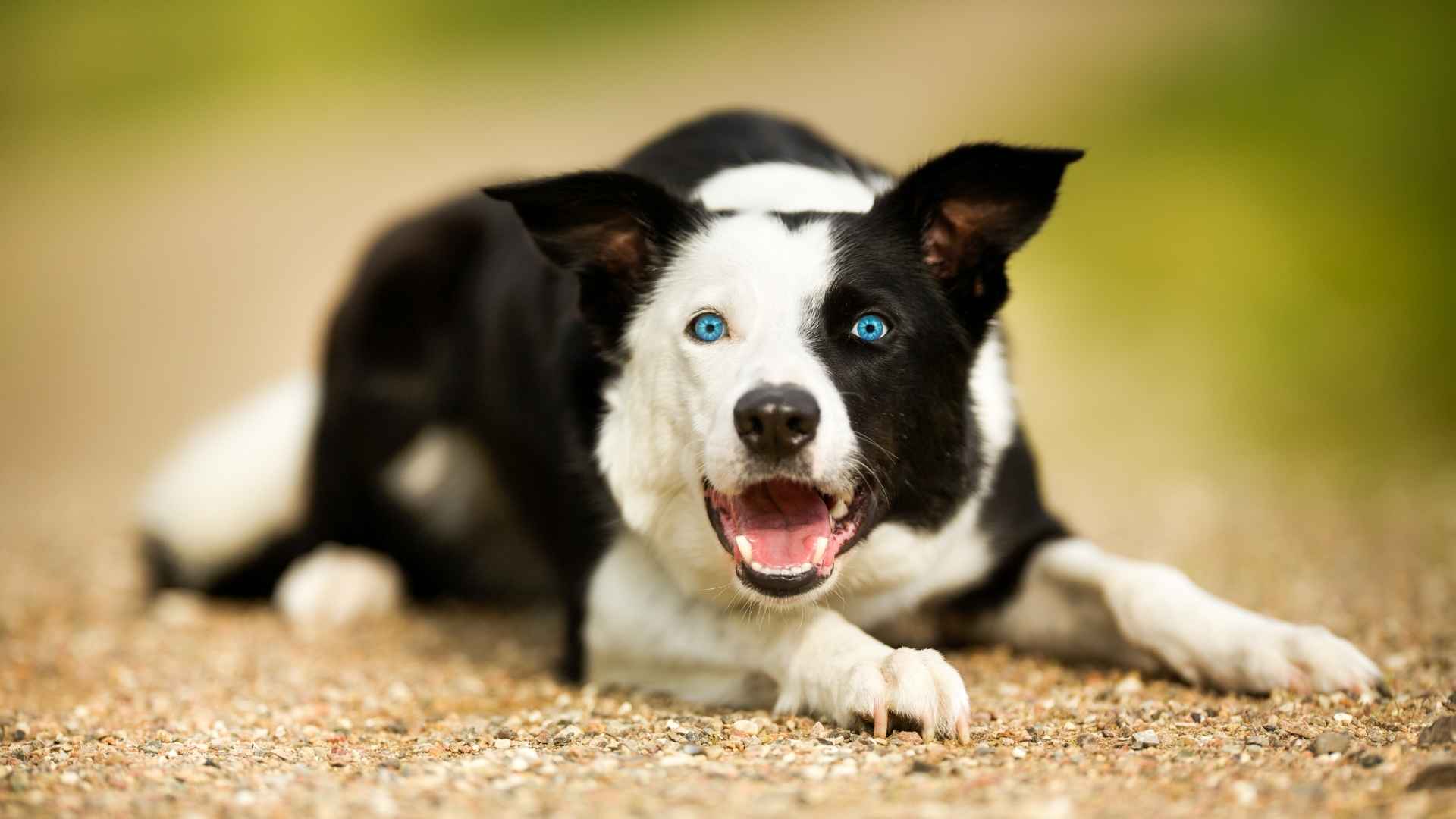From different coat colors and patterns to differently colored dog eyes, dog genetics has a fascinating role in turning our furry friends into works of art. We’ve all seen spotted or speckled dogs, and also those with blue eyes. When both these traits combine, we get a mesmerizing dog.
Why do dogs have speckled coats?
The “merle” gene is responsible for creating a speckled effect in dog coats with lighter or darker colored patches.
Okay, but what about the blue eyes?
Some dogs (quite rarely) have a variant in the ALX4 gene that gives them bright blue eyes.
Dogs with piebald coats sometimes have blue eyes due to a localized lack of pigmentation.
And finally, the merle gene responsible for the merle patterns also sometimes causes blue eyes.
When we think of speckled dogs with blue eyes, the Siberian Husky is the obvious thought that crosses minds. There are many other breeds with this unique and enchanting combination, and in this article, we’ll review 7 of them.
Speckled Dog Breeds with Blue Eyes
1. Border Collie
While Border Collies’ intelligence and energy are always a part of their character, some of them also come with the merle gene, which shows in their coats and eye color.
Border Collies are originally herding dogs built to work with people and herd livestock. If you want a loyal and gentle pet, they fit the bill without any doubt.
Quick facts:
They are 18-22 inches tall at the shoulder.
They can weigh 30-55 pounds.
They live up to 15 years.
Collie’s coat color variety is beyond impressive, with solid, bi and tricolor, and merle coats. No matter what the base color is, Collies often have beautiful speckles on their thick coats. They tend to shed aggressively, so regular grooming is a must.
2. Australian Shepherd
Australian Shepherds are herding dogs that often come with striking blue eyes and speckled coats. These energetic dogs make great family pets for active families who can match their need for physical activity.
Aussies carry the ranch life whimsy with their connection to the farm and cowboy lifestyle. With their rugged look and tough but lean build, they’re a picture of a hard-working lifestyle, a herding breed.
Quick facts:
Aussies can be 18-23 inches tall and 40-65 pounds in weight.
They live for 14-15 years.
They tend to shed moderately.
Australian Shepherds have beautiful speckled coats that make them look like an abstract painting. The American Kennel Club recognizes standard colors like Black, Red, Red Merle, and Blue Merle. Different kinds of tan points and markings are also seen on their speckled coats.
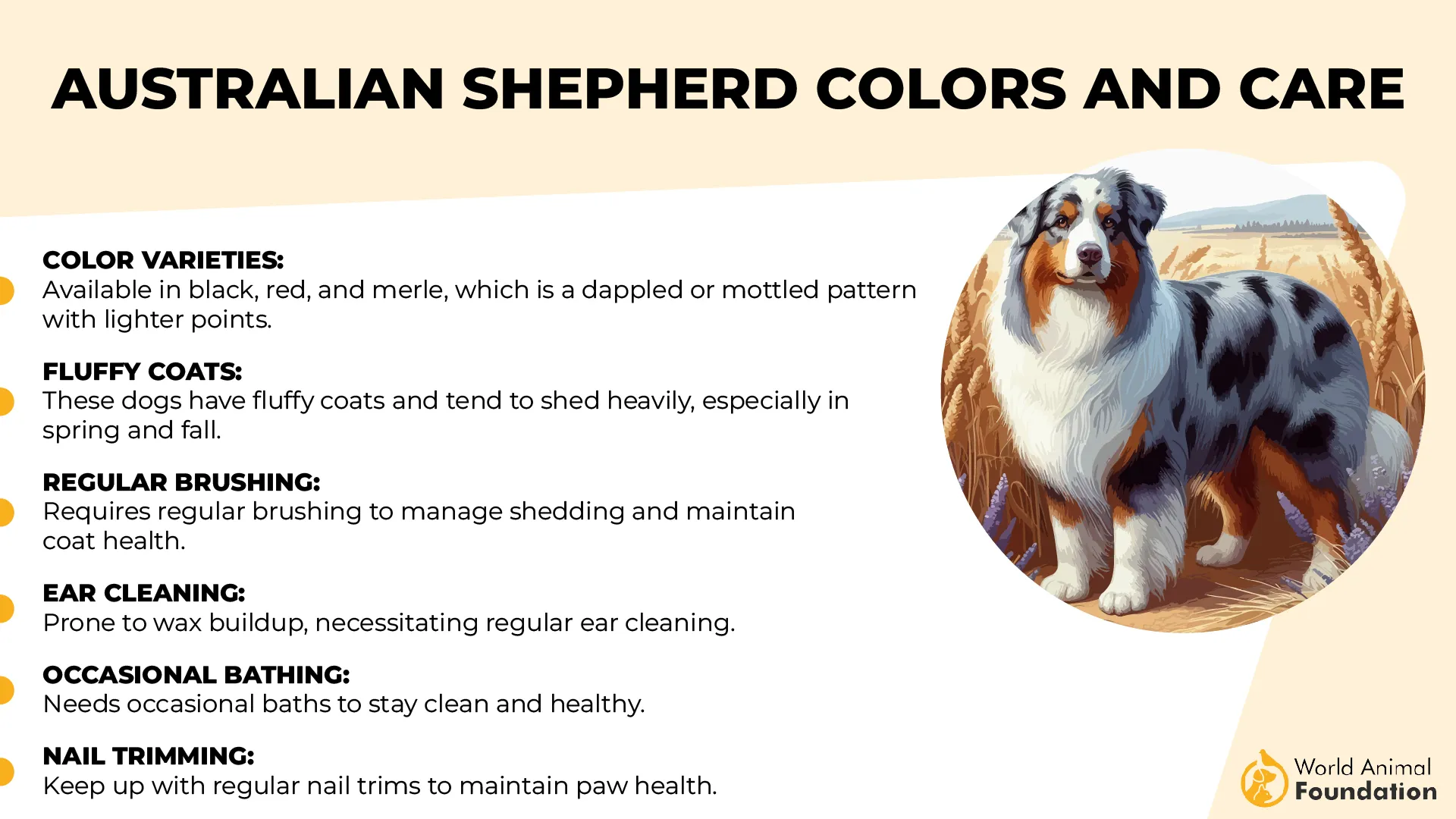
Speaking of merle, Aussies with these merle coats are likely to have one blue eye or both.
3. Great Dane
From being used for hunting large game to becoming loyal and loving companions to pet parents, Great Danes have come a long way. These large dogs don’t look like it, but they’re quite well-mannered and playful.
According to WebMD, Great Danes originated in Germany 400 years ago and are a cross between the Old English Mastiff and the Irish Wolfhound.
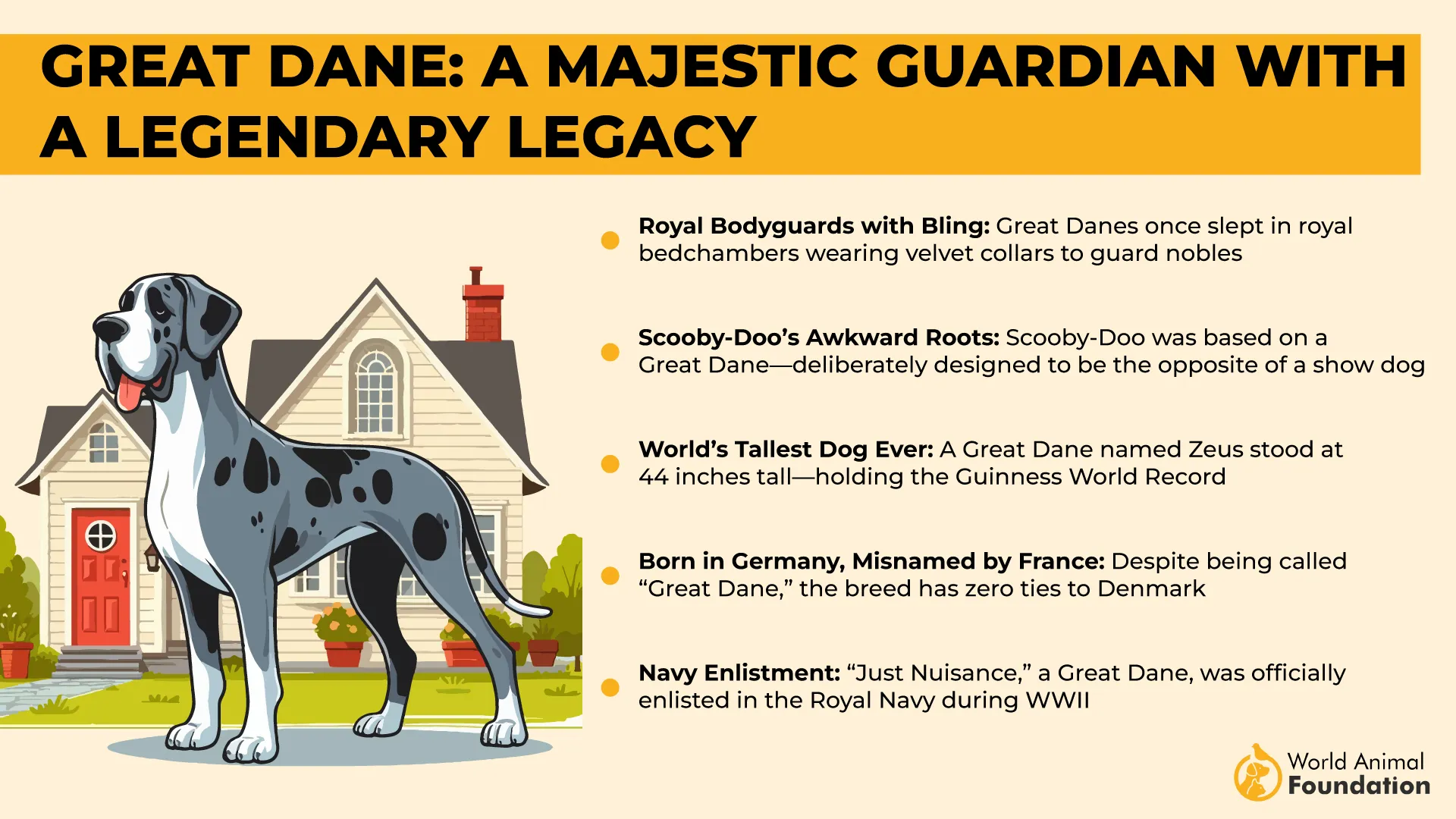
Quick facts:
Danes are one of the tallest dogs in the world (ranging up to 32 inches), and their weight can go up to 175 pounds.
They have a rather short life span (10 years).
Let’s get to the speckles! Great Danes can have merle or Harlequin coats; we already know about the latter. Harlequin Danes have the gorgeous classical combination of black and white coat colors, with white base and black markings.
These giant lapdogs also tend to have blue eyes due to the distribution of pigmentation.
4. Chihuahua
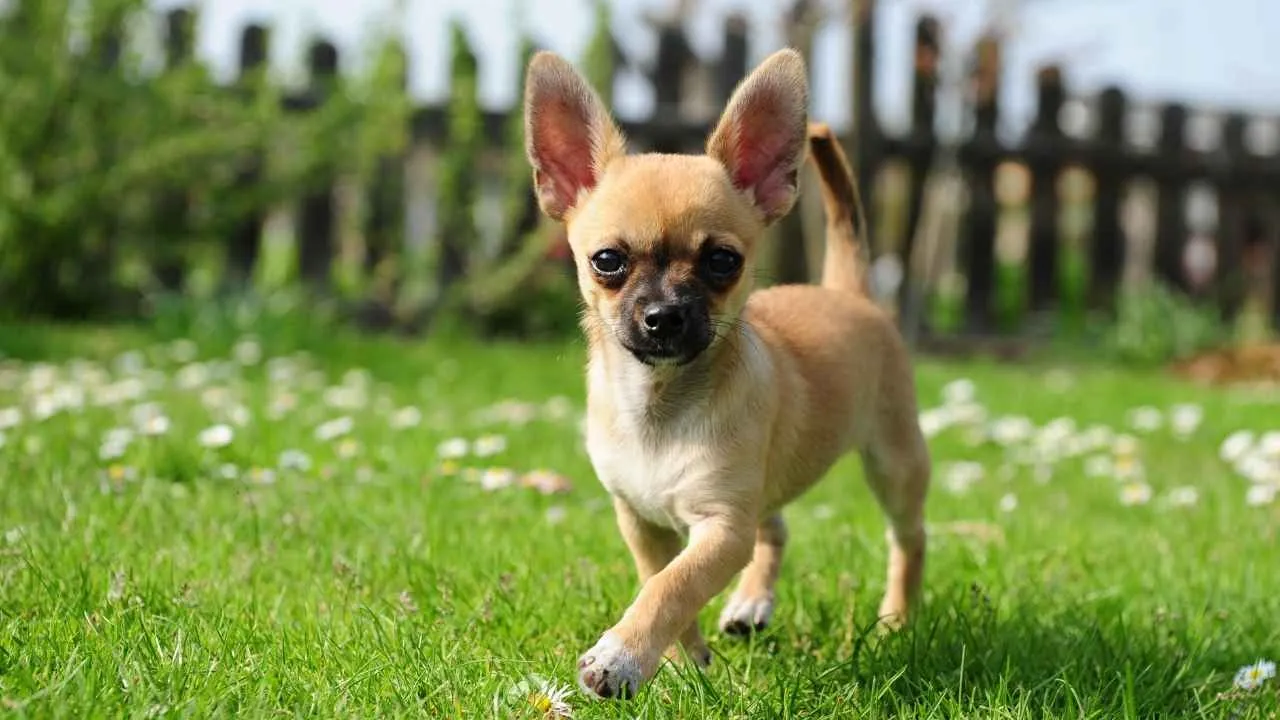
Chihuahuas are one of the smallest dog with blue eyes. They have a comical appearance with their pointy ears, expressive eyes, and broad muzzles.
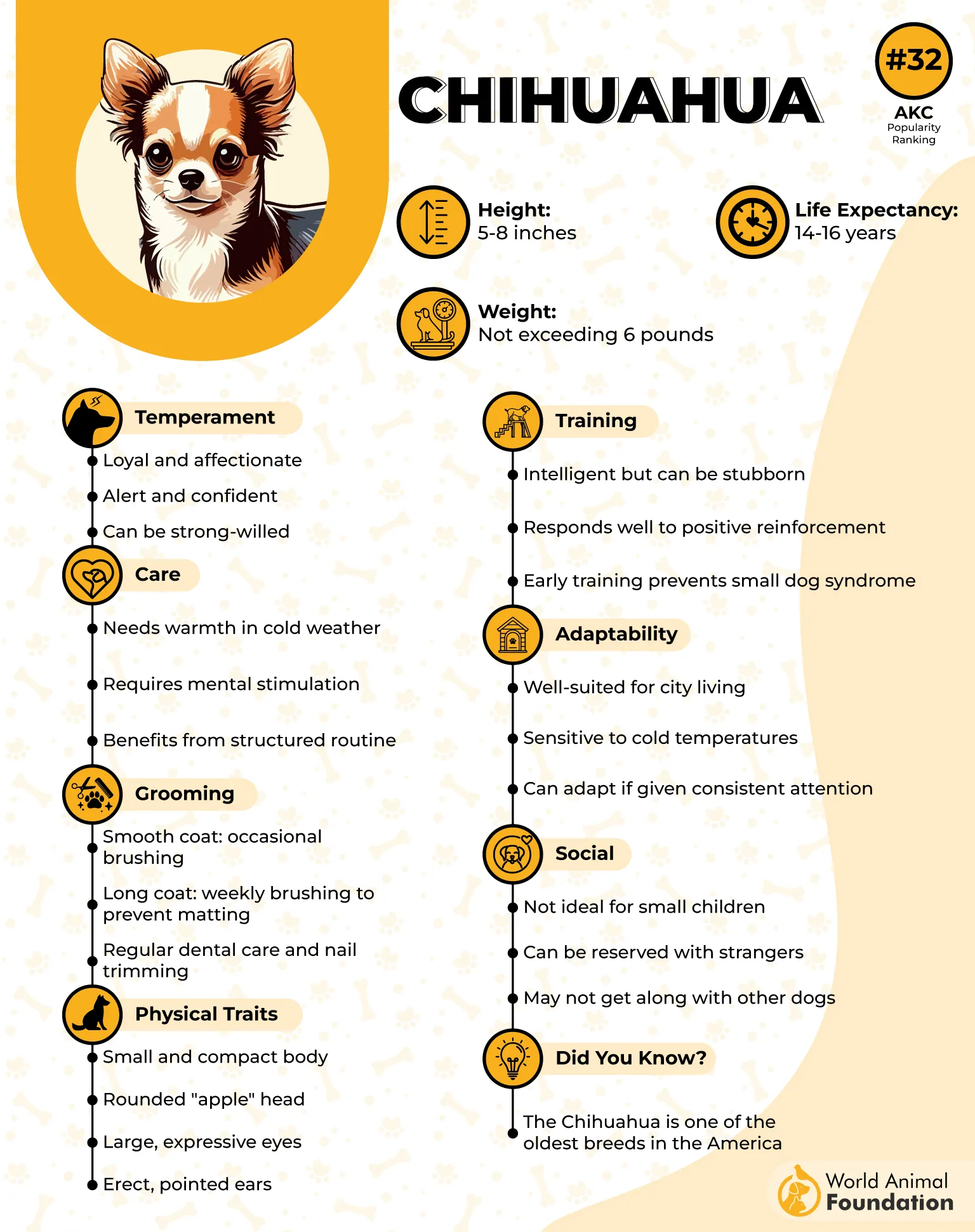
This breed can throw sass with just the way it looks at you; no words needed. Their “apple-shaped” round head is a breed hallmark. You might be cool, but are you the national symbol of Mexico? Well, these little pups are.
Quick facts:
They’re no heavier than 6 pounds.
They’re not taller than 8 inches.
They’re spectacular city pets and enjoy the company of their owners.
Chihuahua’s coat colors are quite diverse; only a few of the American Kennel Club breed standards are chocolate, black, tan, and cream. These sweet doggos can have different kinds of speckled coats, from brindle to sable markings.
Chihuahua’s big, almond-shaped, and often dark eyes can sometimes have blue irises when they have the merle gene mutation.
5. Shih Tzu
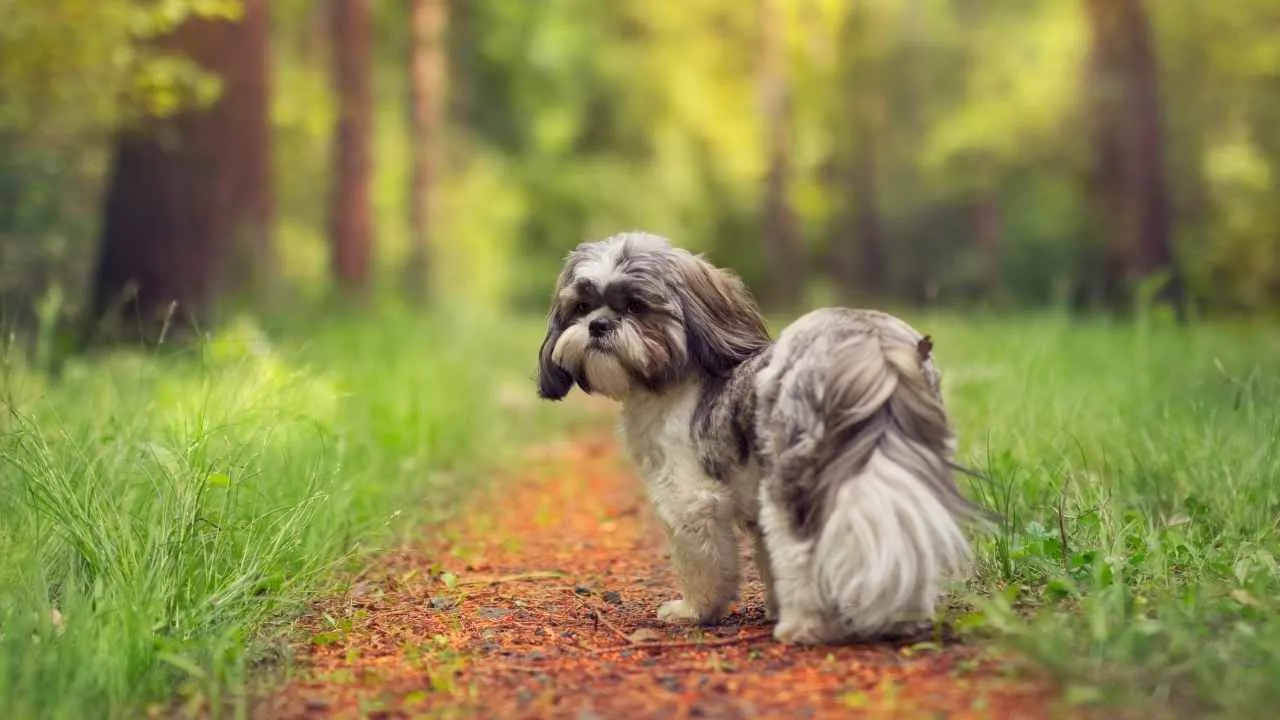
Shih Tzus are adorable, fluffy pups that look like someone put tiny eyes and muzzles on a bundle of thick hair. This toy breed comes in different beautiful coat patterns, and sometimes, blue eyes.
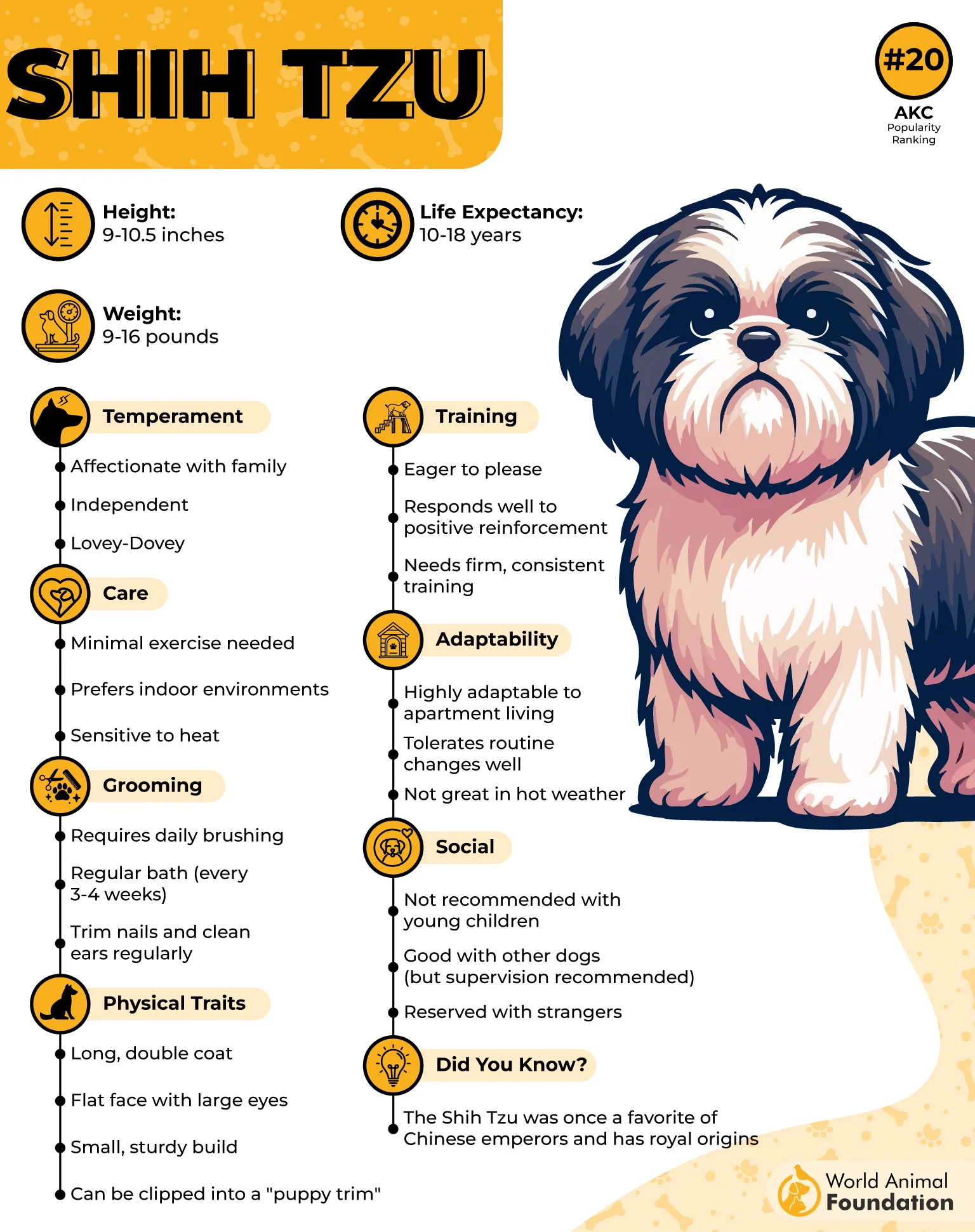
Shih Tzus are excellent companions not only for apartment living, but they also look royal taking a trot outdoors with you. They make amazing family pets for households with kids and thrive when they’re being pampered.
Quick facts:
Shih Tzu are called “little lions” because of their lion-like mane and look.
This toy breed is no taller than 8-11 inches, and weighs up to 16 pounds.
Shih Tzus are one of those dog breeds that make your life magical with their different kinds of coat colors and speckled patterns. Many Shih Tzus have white bases with tan markings; brindle patterns are also often seen in these little canines.
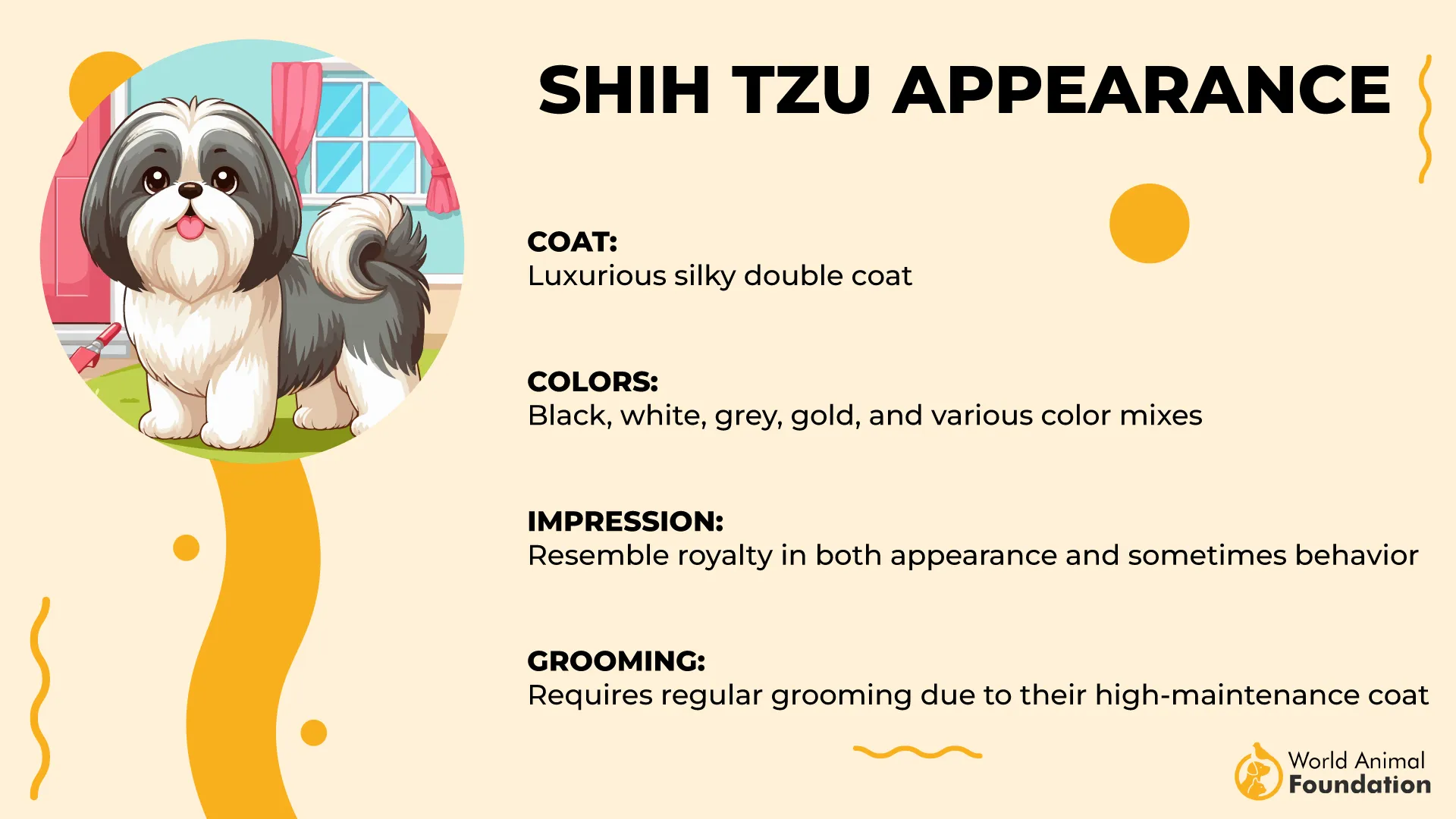
These pups rarely have blue-eyed dogs, but when they do, it might be due to a lack of the gene that gives dogs the color black.
6. Dalmatian
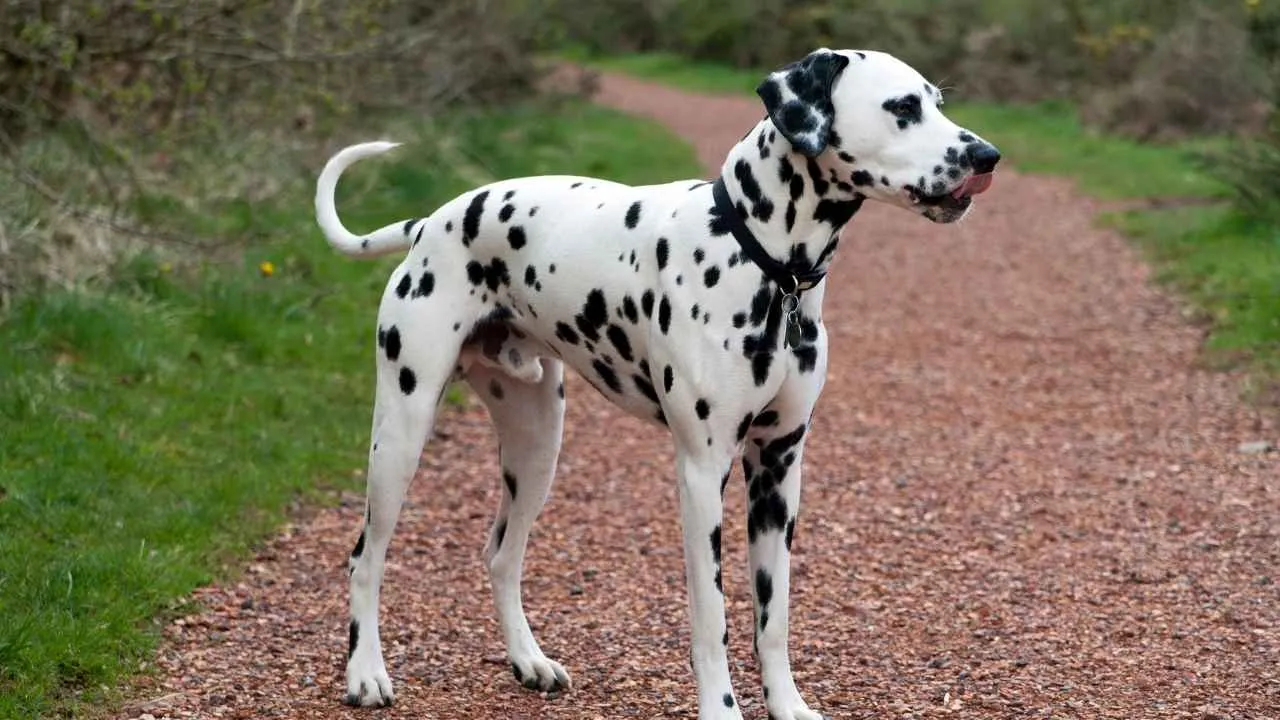
How can we forget the one and only “Dalmatians” when discussing spotted coats? Dalmatians are historically popular as high-energy coach dogs.
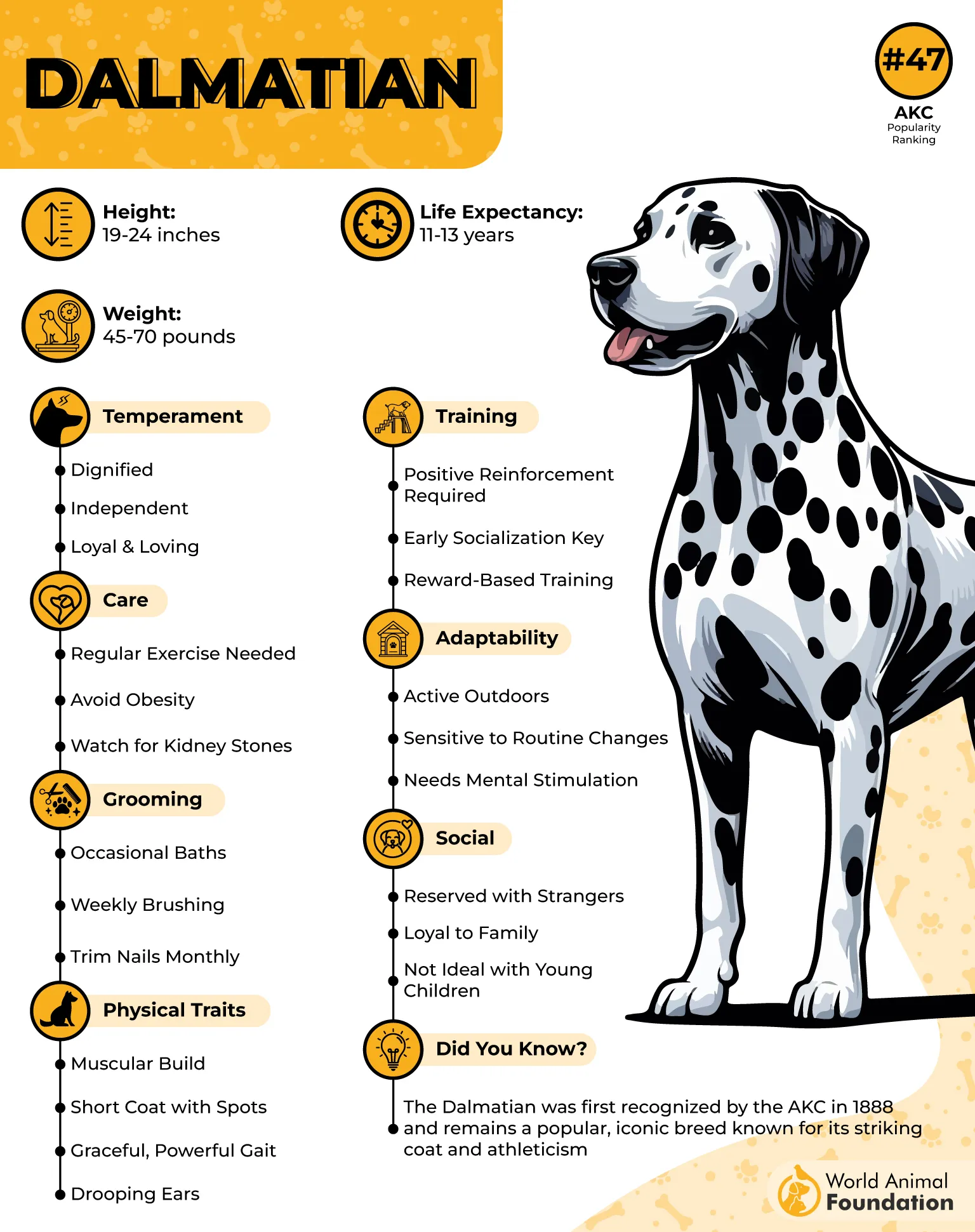
From running for miles side by side carriages to becoming loving family pets, Dalmatians are surely versatile canines.
Quick facts:
Dalmatians can be 19-24 inches tall and can weigh 24-70 pounds.
They used to be sidekicks of firefighters, trained to bark at bystanders when fire alarms rang.
Dalmatians always come with two copies of the piebald gene, which explains their black or liver spots on a white base. Few dogs are as famous for their spotted coats as these beautiful, tall, and lean pups are. Their blue eyes are also a result of the same gene, which is also linked to hearing impairment.
7. Catahoula Leopard Dog
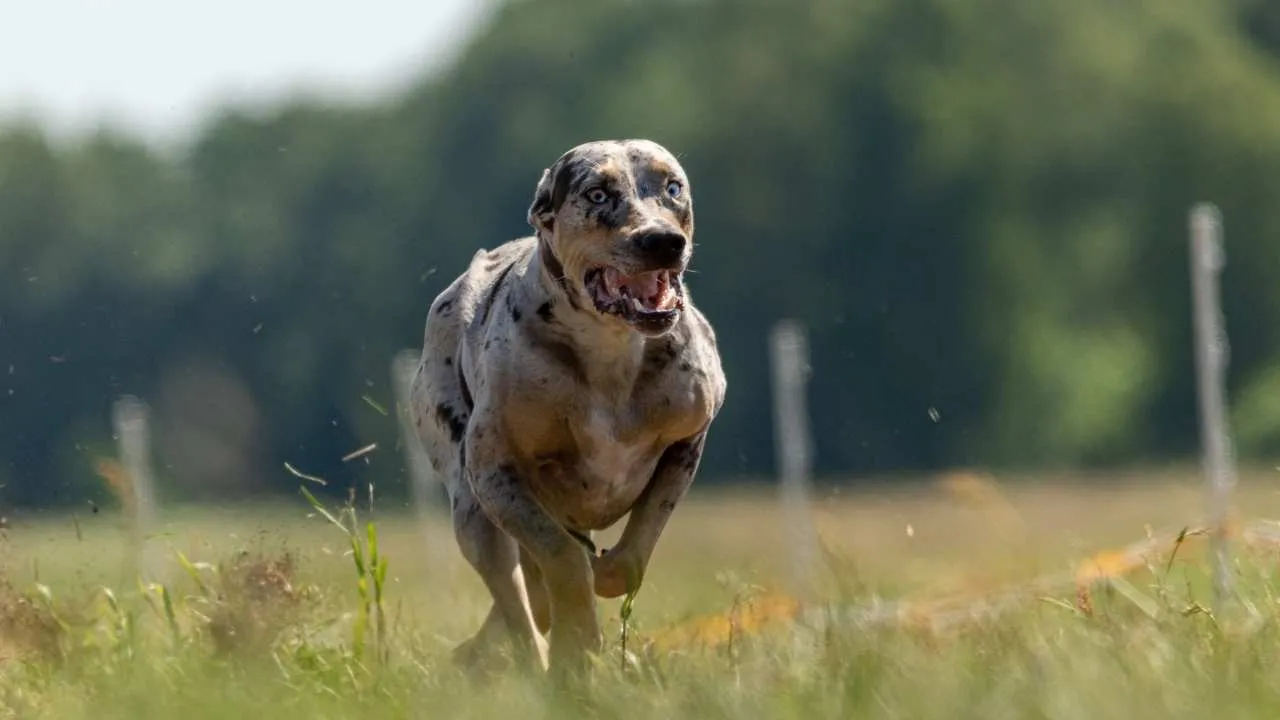
Kind of like Leopards, Catahoula Leopard dogs tend to have black spots spread all over their bodies. Stunning blue eyes are pretty common in these dogs and add a mystery to their otherwise stocky build.
These herding dogs have a smooth, short coat and tend to be large to medium in size. They’re badass farm dogs, but also make loving and playful companions for families and individual pet owners.
Quick facts:
This breed was made the original state dog of Louisiana in 1979.
They are 22-24 inches tall and 50-95 pounds in weight.
They’re very alert and energetic pups, but not aggressive.
Catahoula Leopard Dogs entice us with their many coat colors and patterns. They often have the merle gene and can be brindle, black, red, or chocolate, often accompanied by tan markings and speckles. This blue-eyed dog breed has pretty bright and electrifying eyes, making them look like superhero dogs.
Conclusion
While merle dogs are too adorable and attractive with their interesting speckled merle coats and eye colors, if a dog is double merle (has two merle copies), they can be prone to some health issues. Same goes for blue-eyed doggos; blindness is a health concern in some such dogs, including deafness and cataracts.
While it’s not necessary that your speckled and blue-eyed dog will have health problems, getting them screened is a great way to enjoy tension-free time with them.


